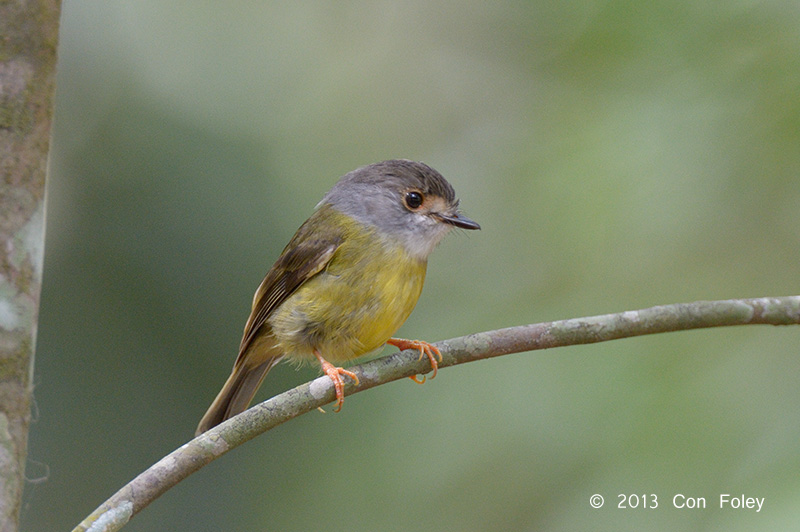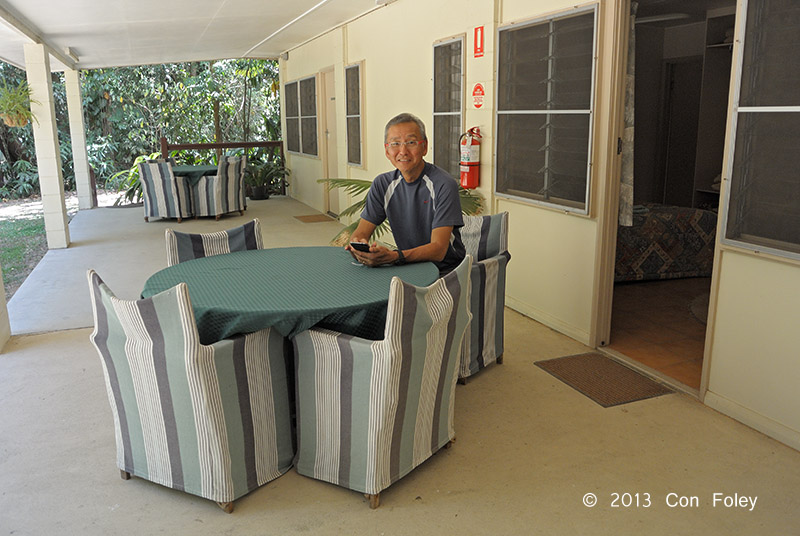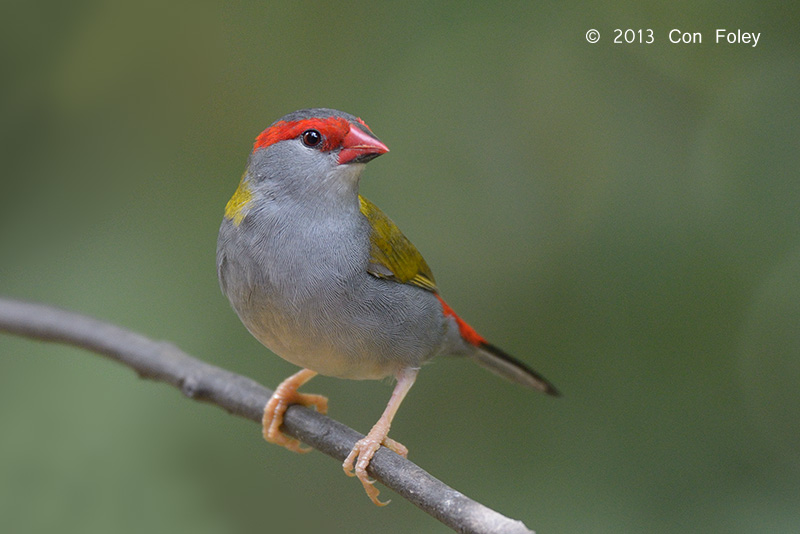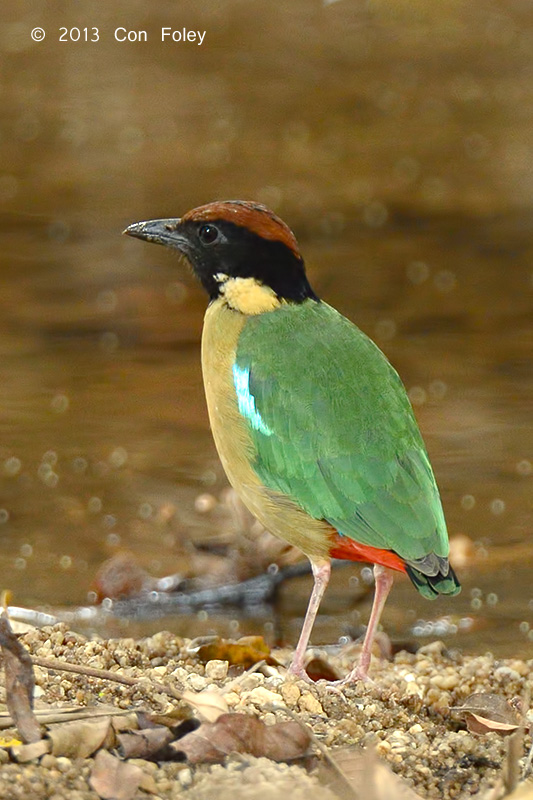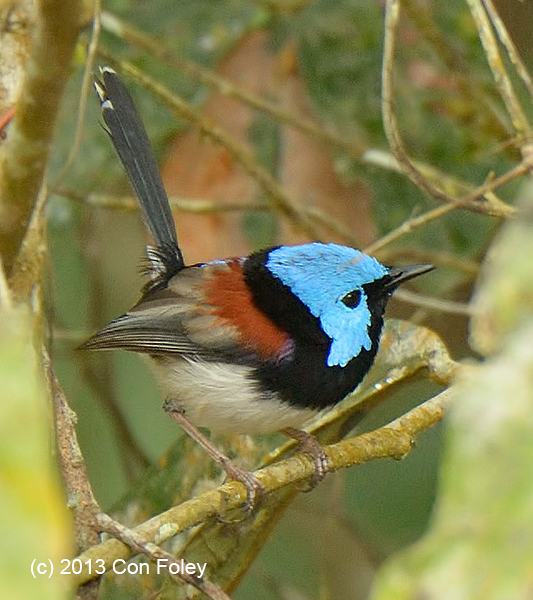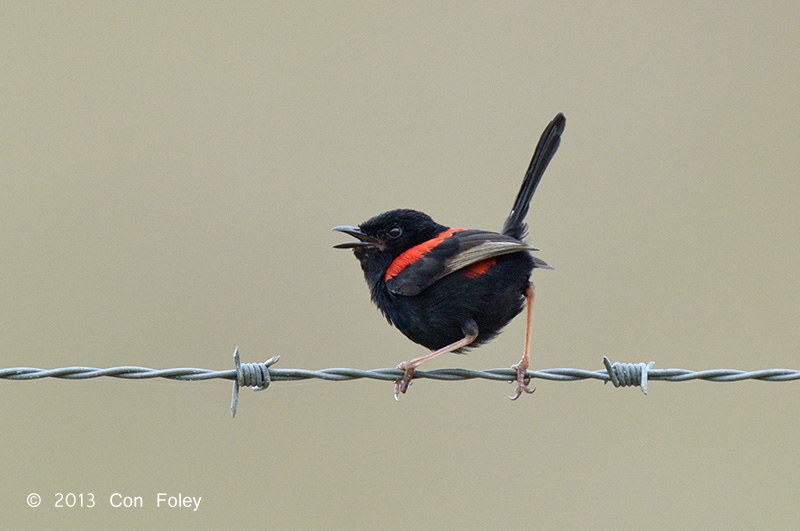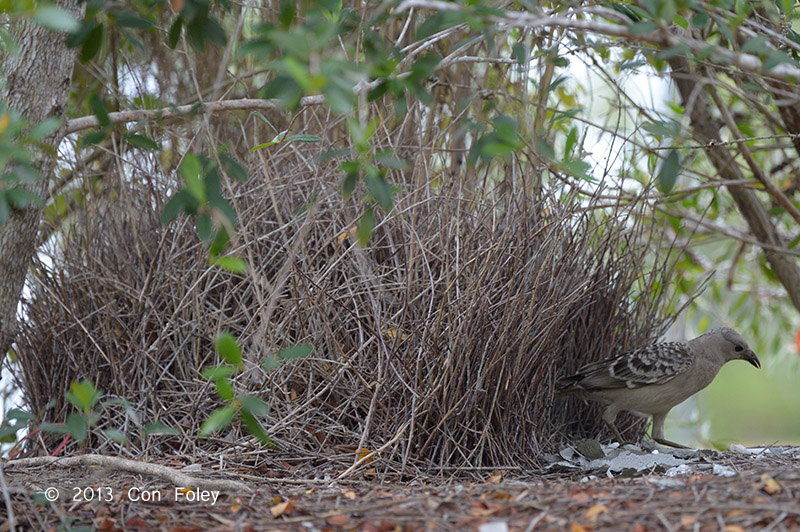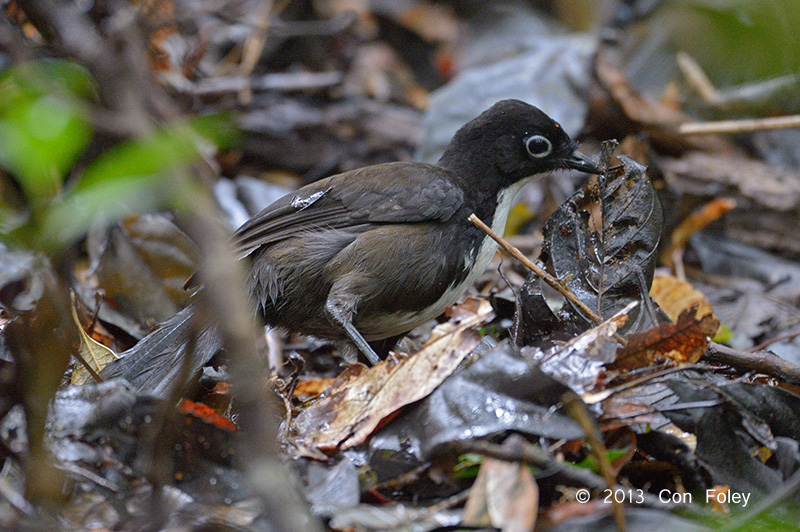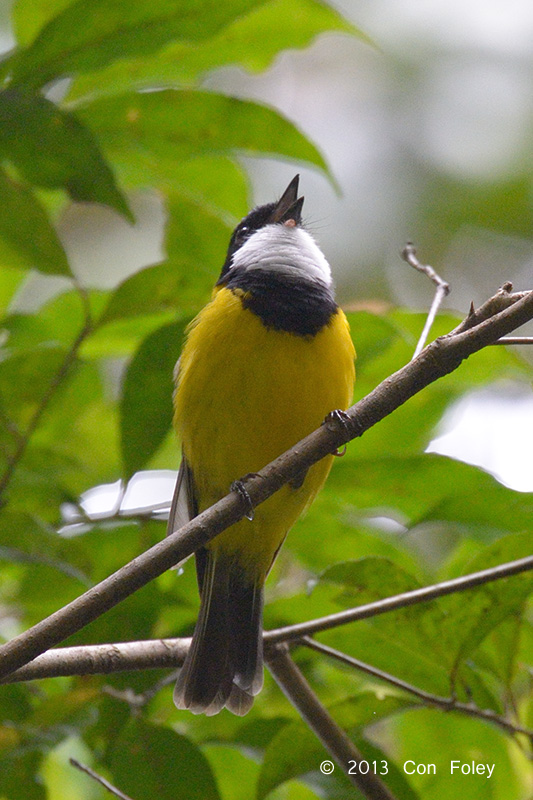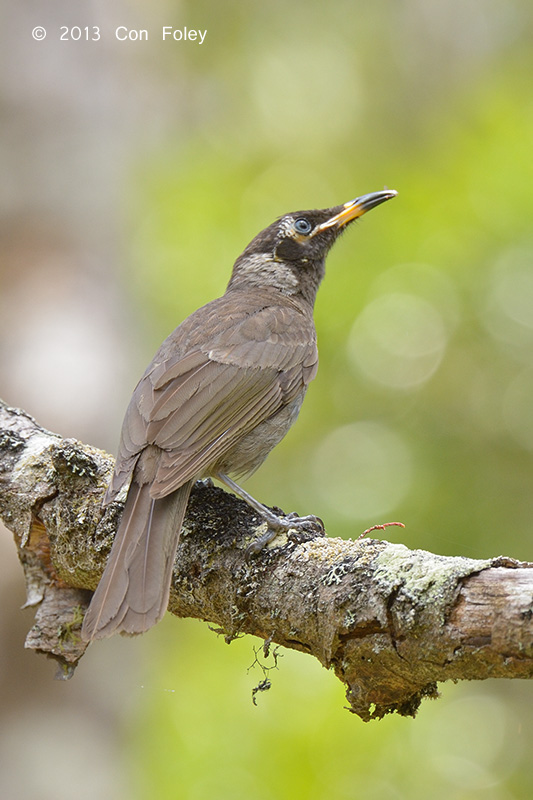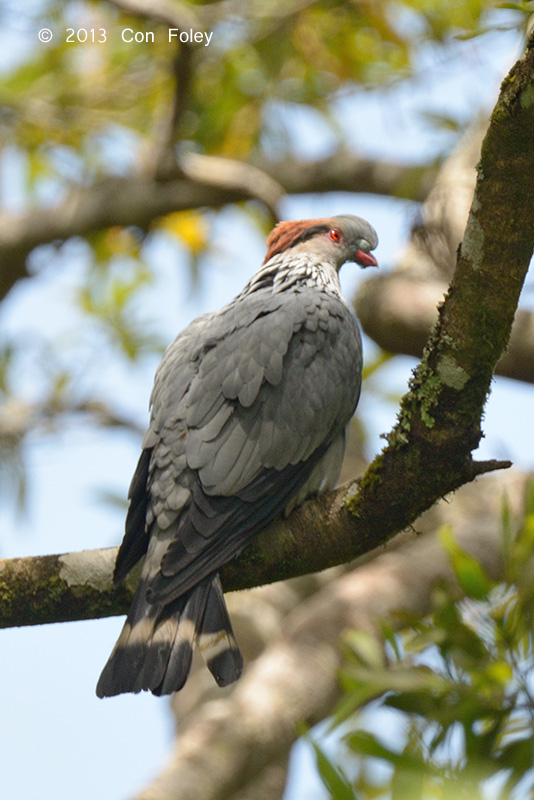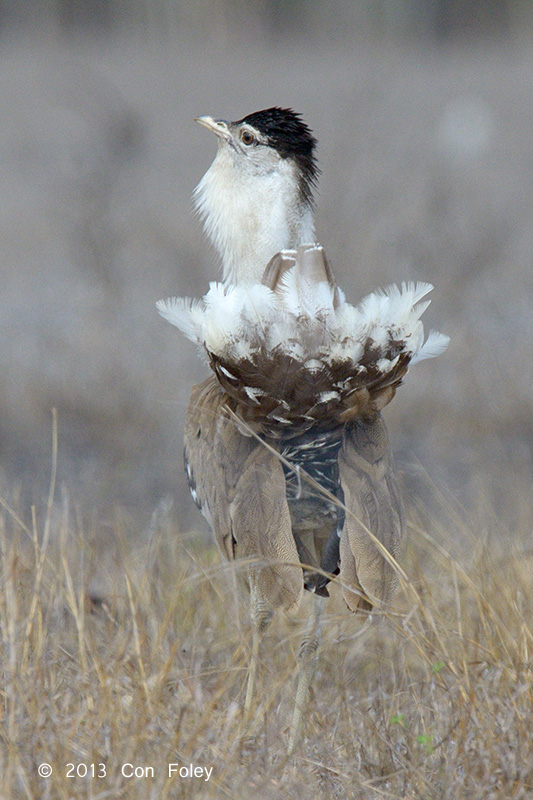Coming from Daintree our next destination was Julatten. Julatten is a vibrant community of 998, more than ten times the size of Daintree !
Julatten was the first portion of our trip significantly above sea level, where we stayed was at about 440 meters, just noticeably cooler than the lowlands in Cairns and Daintree. We stayed at Kingfisher Park for five nights. We had to split our stay with first three nights, then after a trip to Yungaburra we returned for another two nights.
As luck would have it this was a great choice. The first decent rain of the season came the night before our last day, and we finally got the Buff breasted Paradise Kingfisher low and on an open perch. This is what Kingfisher Park is famous for, last season they had seven nesting pairs on their 5 hectare property!
It was a popular perch, a Pale Yellow Robin came and used the same spot the kingfisher had used.
The accommodation was spacious and included a covered patio. We really enjoyed our stay there and the proprietors Keith and Lindsay were very knowledgable about the local birding scene.
There is a bird feeder just outside reception, which attracts a flock of around forty Red-browed Finches, several Emerald Doves and Bar-Shouldered Doves who are surprisingly are more timid than the finches!
On our first afternoon at Kingfisher Park while being entertained by the finches, I heard the unmistakable call of a pitta, and set off looking for him. The pittas were entering their breeding season and were calling periodically throughout the day and even in the middle of the night. Within only ten minutes of stalking my shy subject I had my first sighting (and blurry photo) of the Noisy Pitta 🙂 According to our hosts there are about 5 pairs of breeding pittas in the immediate area. It did take me several days and Carol’s help to get a somewhat better photo though.
There is also a resident Boyd’s Forest Dragon and a Spectacled Monarch making regular appearances.
Next morning we had a full day with Carol Iles, a great guide both for bird watchers and also for bird photographers, she has a good appreciation for what each type of client will want. We saw and heard over 90 species covering a wide range of habitats plus gained a better understanding of the lay of the land and current environment, highly recommended! One of the spots she took us to was for a Lovely Fairywren, although we didn’t see it that day, and it took us three tries finally we did manage it see it and truly it is “lovely”.
We also got the Red-backed Fairywren in the open lowland country.
Near the town of Julatten was a Great Bowerbird bower, and the male was actively inspecting his creation.
Carol brought us up to Mt Lewis where most of the endemics can be seen. This turned out to be my favorite spot of the entire trip and I visited Mt Lewis four times. The ecosystem is highland rainforest at almost 1000 meters, so daytime highs were not extreme. It was cool enough that bird activity existed all day. And it was cool enough for me too, throughout my stay in the tablelands I never needed a midday break.
Here we saw Chowchilla, a thrush-like species that foraged on the ground in family groups, rapidly flipping over dead leaves looking for food, extremely difficult to photograph under very low light and cluttered conditions. This is one of the dozen tablelands endemics.
Another endemic was the Atherton Scrubwren. A plain brown bird to be sure, but unique to this small geographic area.
We also got the Golden Whistler on Mt Lewis.
And the Bridled Honeyeater, another highland endemic.
The also had a pigeon with a very unusual hair-do, the Topknot Pigeon on Mt Lewis.
Then we went to the drier country near Mt Carbine, and saw a displaying male Australian Bustard !
And plenty of Blue-winged Kookaburras, including nesting pairs.
And finally another frogmouth, the Tawny Frogmouth, at least two nesting pairs. Can you see the baby frogmouth in this photo?
It turns out we reconnected with Fred (whom we met at Red Mill House) on our final two days at Kingfisher Park, and he had made quite a discovery. The long absent Blue-faced Parrot Finches were back on Mt Lewis in the grassy area near the top. So I was there at 6 am on the morning we were to go to the airport, and sure enough a single Blue-faced Parrot-Finch began feeding. I stayed with him for 20 minutes before I had to leave. If even on the day of departure you are still getting great birds, it must have been a good trip ! 🙂


